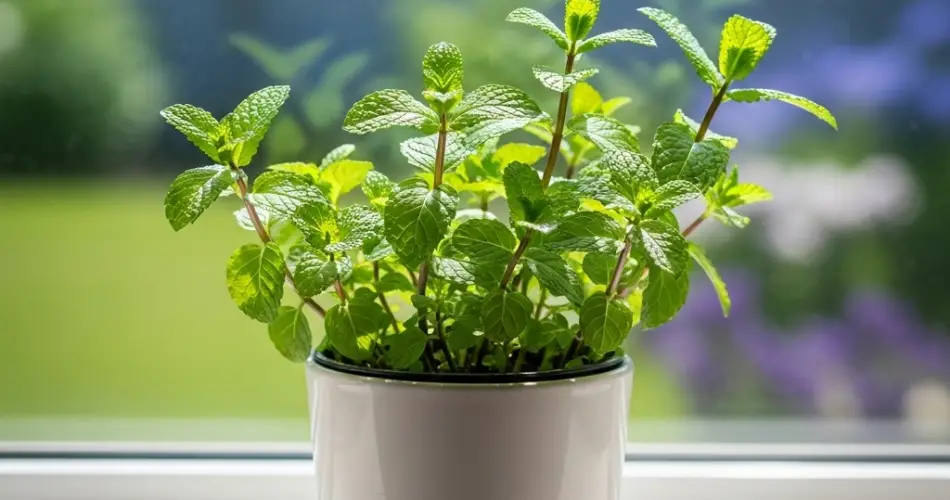Mosquitoes are more than just a nuisance—they can ruin a relaxing evening outdoors and even carry diseases. While chemical repellents are widely available, many people are turning to natural alternatives that are safer for families, pets, and the environment. One of the most effective and pleasantly scented options is mint.
Mint, particularly peppermint and spearmint, contains compounds that mosquitoes dislike, making it a great natural option for repelling these pests. Whether you want to keep mosquitoes away from your patio, garden, or skin, mint offers multiple ways to help.
Here’s how to use mint effectively as a mosquito repellent and enjoy a more comfortable, bite-free environment.
Why Mosquitoes Hate Mint
The key to mint’s mosquito-repelling power lies in its strong scent and high concentration of menthol and limonene, both of which are natural deterrents to mosquitoes. These aromatic oils overwhelm the mosquitoes’ sense of smell, making it harder for them to locate their targets—humans.
The sharp, fresh aroma may be refreshing to us, but to mosquitoes, it signals danger or inhospitable conditions.
1. Planting Mint Around Outdoor Spaces
One of the easiest and most sustainable ways to use mint against mosquitoes is by growing it around your home or outdoor seating areas.
Best spots to plant mint:
-
Near entryways and doorsteps
-
Around patios, decks, and balconies
-
Along garden paths or near seating areas
-
In outdoor planters or hanging baskets
Tips for planting mint:
-
Mint spreads quickly and can become invasive. Plant it in containers or use barriers if placing it in the ground.
-
Keep mint well-watered and in partial to full sun for best growth and strong aroma.
-
Trim it regularly to promote bushier growth and more essential oil production.
As the plant grows, its scent naturally fills the area, helping to keep mosquitoes at bay.
2. Making a Homemade Mint Mosquito Spray
You can also use mint leaves to make a simple DIY mosquito repellent spray. It’s safe, natural, and can be used on skin, clothing, or around the home.
What you’ll need:
-
1 cup of fresh mint leaves (peppermint or spearmint)
-
2 cups of water
-
1 tablespoon of rubbing alcohol or witch hazel (acts as a preservative)
-
A spray bottle
Instructions:
-
Boil the mint leaves in the water for 10–15 minutes.
-
Let the mixture cool completely, then strain out the leaves.
-
Add the alcohol or witch hazel and stir well.
-
Pour into a spray bottle and store in the refrigerator for up to a week.
How to use:
-
Spray on exposed skin and clothing before going outside.
-
Mist around windows, doors, and outdoor furniture.
-
Reapply every 1–2 hours, especially if sweating or in a heavily infested area.
3. Using Mint Essential Oil as a Repellent
Mint essential oil—especially peppermint oil—is highly concentrated and even more potent than fresh leaves. It’s an effective ingredient in natural repellents.
How to make a mint oil spray:
-
Mix 10–15 drops of peppermint essential oil with 2 tablespoons of carrier oil (such as coconut, almond, or jojoba oil).
-
For a spray, mix the essential oil with 1/4 cup water and 1 tablespoon witch hazel in a spray bottle.
How to use:
-
Dab the oil mix on pulse points like wrists, neck, and ankles.
-
Spray on clothing, curtains, or outdoor cushions.
-
Never apply undiluted essential oils directly to skin as they can cause irritation.
Bonus Tip: Add a few drops of mint essential oil to a diffuser on your porch or in your home to create a mosquito-repellent barrier.
4. Mint Sachets for Indoor Use
If mosquitoes find their way indoors, mint can help protect your living space.
How to make mint sachets:
-
Dry fresh mint leaves and place them in small breathable fabric pouches.
-
Add a few drops of peppermint oil for added potency.
-
Place sachets near windows, on bedside tables, or inside drawers.
These sachets not only repel mosquitoes but also leave your rooms smelling fresh.
5. Combine Mint with Other Natural Repellents
Mint works well on its own, but you can boost its mosquito-repelling power by combining it with other natural ingredients like:
-
Lemongrass
-
Citronella
-
Lavender
-
Basil
-
Eucalyptus
These can be planted together in pots or used in sprays and oil blends for a multi-sensory barrier mosquitoes won’t want to cross.
Safety Considerations
While mint is safe for most people, here are a few precautions to keep in mind:
-
Test sprays or oils on a small patch of skin to check for allergic reactions.
-
Keep essential oils away from the eyes and mucous membranes.
-
Use caution when applying mint around babies, pets, or individuals with sensitive skin.
Conclusion
Mint offers a refreshing, chemical-free way to protect yourself and your home from mosquitoes. Whether planted in the garden, used as a spray, or applied in essential oil form, mint is an effective and versatile solution. With regular use and smart placement, you can enjoy your indoor and outdoor spaces with fewer bites and more peace of mind.



